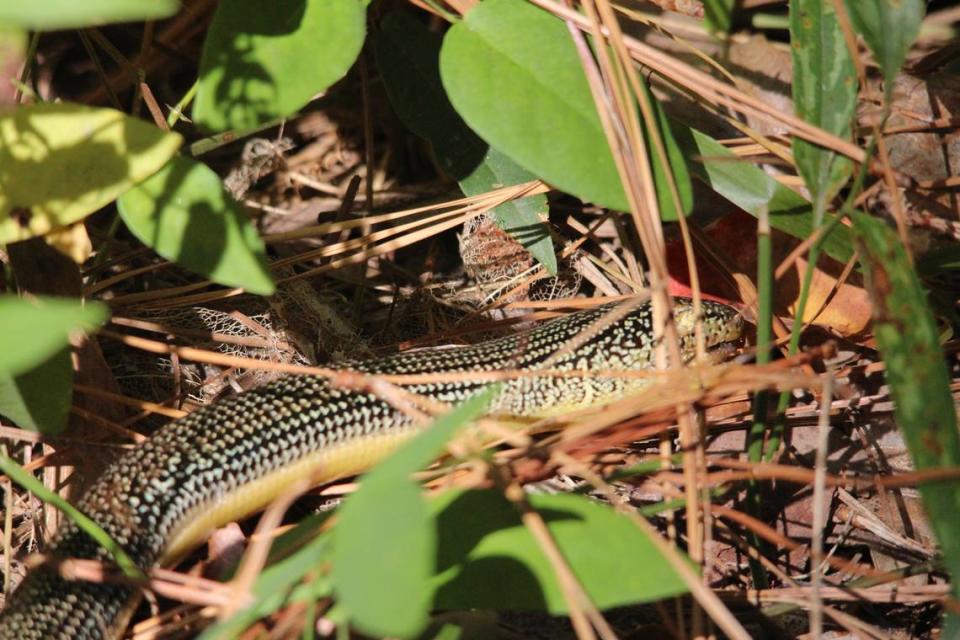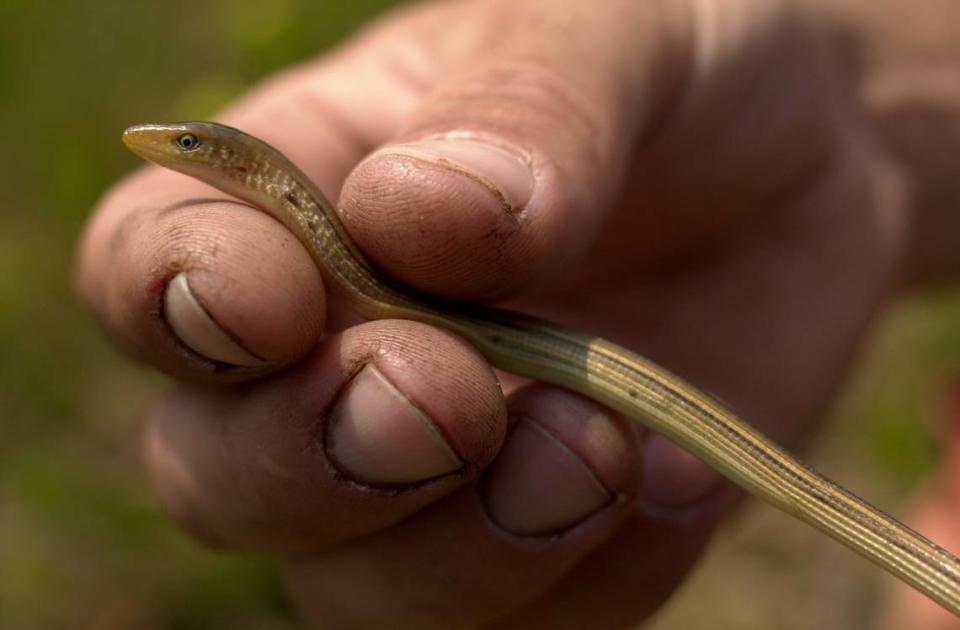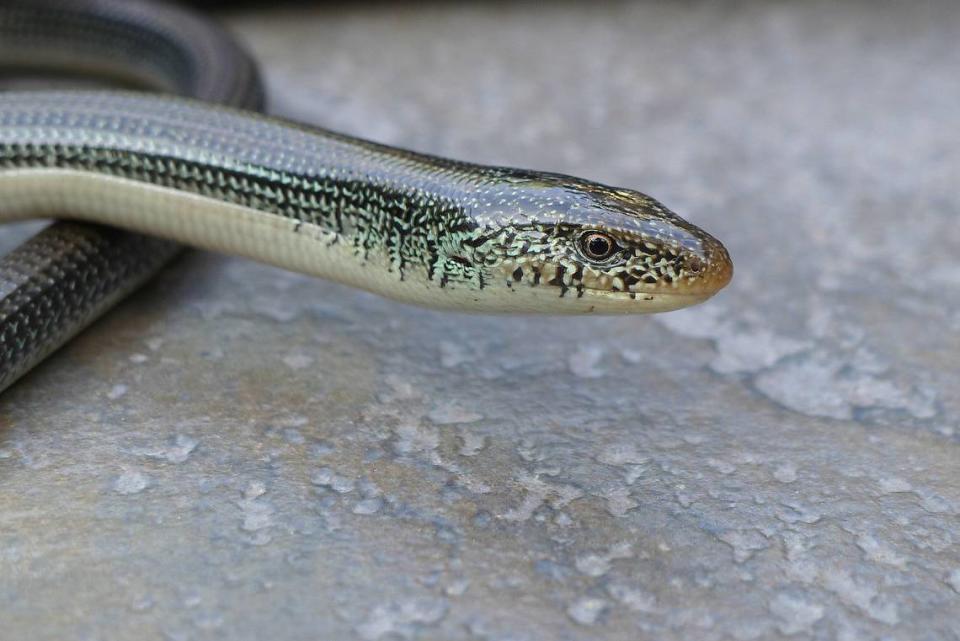That long, scaly thing slithering on the ground is probably a snake. But there is a chance that this is not the case.
North Carolina is home to three species legless lizardsalso called glass lizardswhich look remarkably similar to snakes: the Oriental glass lizardthe slender glass lizard and the imitating glass lizard.
The News & Observer spoke with local wildlife experts to learn more about these reptiles — where they live, what they eat, what eats them and more — and how to tell them apart from snakes.
Why are legless lizards called glass lizards?
As with other lizards native to North Carolina, the Glass lizard tails are easily broken off – just as glass shatters easily. If a predator clings to the tail, it will break off and be thrown around, perhaps keeping the predator busy and giving the lizard some time to escape.
Although the tails will grow back, they will not be as long as before, and the flesh will be a different color. It’s unusual to find a glass lizard with its original tail still intact, says Jeff Beane, collection manager for herpetology at the North Carolina Museum of Natural Sciences.

Where in North Carolina do glass lizards live?
Although the eastern glass lizard is common throughout the state, the slender glass lizard is the most likely in the Triangle. The mimic glass lizard is rare.
The lizards often prefer that around water bodiesbut they are found throughout the coastal plain.
“Most of the time you’ll find that they’re basically hiding so they don’t get noticed by larger animals,” says Falyn Owens, a wildlife education expert for the North Carolina Wildlife Resources Commission. “As with many reptiles and amphibians, you usually won’t find them at all unless you move through the sand, dig around, turn over logs or rocks to see what’s underneath.”
Two eastern glass lizards are on display at the North Carolina Museum of Natural Sciences. Rachel Myers, the museum’s curator of reptiles and amphibians, said it’s best to see them in the morning, when they are most active.


How to tell a glass lizard from a snake
There are several physical characteristics that distinguish snakes and legless lizards:
-
Glass lizards in North Carolina do ear openings on the sides of their heads, but snakes do not. Instead, snakes typically listen through vibrations in the ground.
-
Glass lizards have that eyelids and can blink, but snakes have immobile, transparent eyelids and cannot blink.
-
Snakes can do that loosen their jaws can swallow large prey, but glass lizards cannot.
-
osteoderms, which are bony plates, are found in the scales of glass lizards and prevent their skin from expanding. Instead, they have a lateral groove or fold along the side of glass lizards that allows their bodies to expand, such as when they eat a large meal. This is different from snakes, which have skin that can expand.
-
We don’t recommend picking up the next slippery thing you see. But if you picked up a glass lizard, you would feel like it was a reptile rigid and inflexibleunlike snakes.
-
If you were to look at the belly of a snake, you would see transverse scales or scutes running across the body. Glass lizards have that small bowls at their bottom.
-
The tails of glass lizards are relative bigger than the tails of snakes. In glass lizards, the tail can be up to three-quarters of their body length.
The sleek glass lizard, that is usually brown or tan with long stripes running the length of its body, can grow up to 42 centimeters long, and that would be a very large example, Owens said. Usually these lizards are more than one or two feet long.


Are Legless Lizards Dangerous to People or Pets?
No, they will not harm people or pets.
Why are there legless lizards?
Snakes evolved from lizards, Beane said, because over time some lizards adopted a lifestyle that didn’t require legs. Likewise, there are snakes with small limbs that almost never use them.
“If you don’t use something, you lose it in evolution,” Beane said.
Diet of glass lizards
Legless lizards usually eat insects such as grasshoppers, crickets, earthworms and spiders. They also consume snails, other lizards and small vertebrates such as newborn mice.
“They can’t open their mouth very wide, so it has to be something small enough to swallow,” Owens said.
Predators of legless lizards
These reptiles are prey for many animals:
“Almost anything that’s hungry, she’ll eat them,” Beane said.
‘Snake’ on Outer Banks is actually a legless lizard with a detachable tail, experts say
911 caller reports alien spaceship in Durham. “Most likely crickets,” police say







